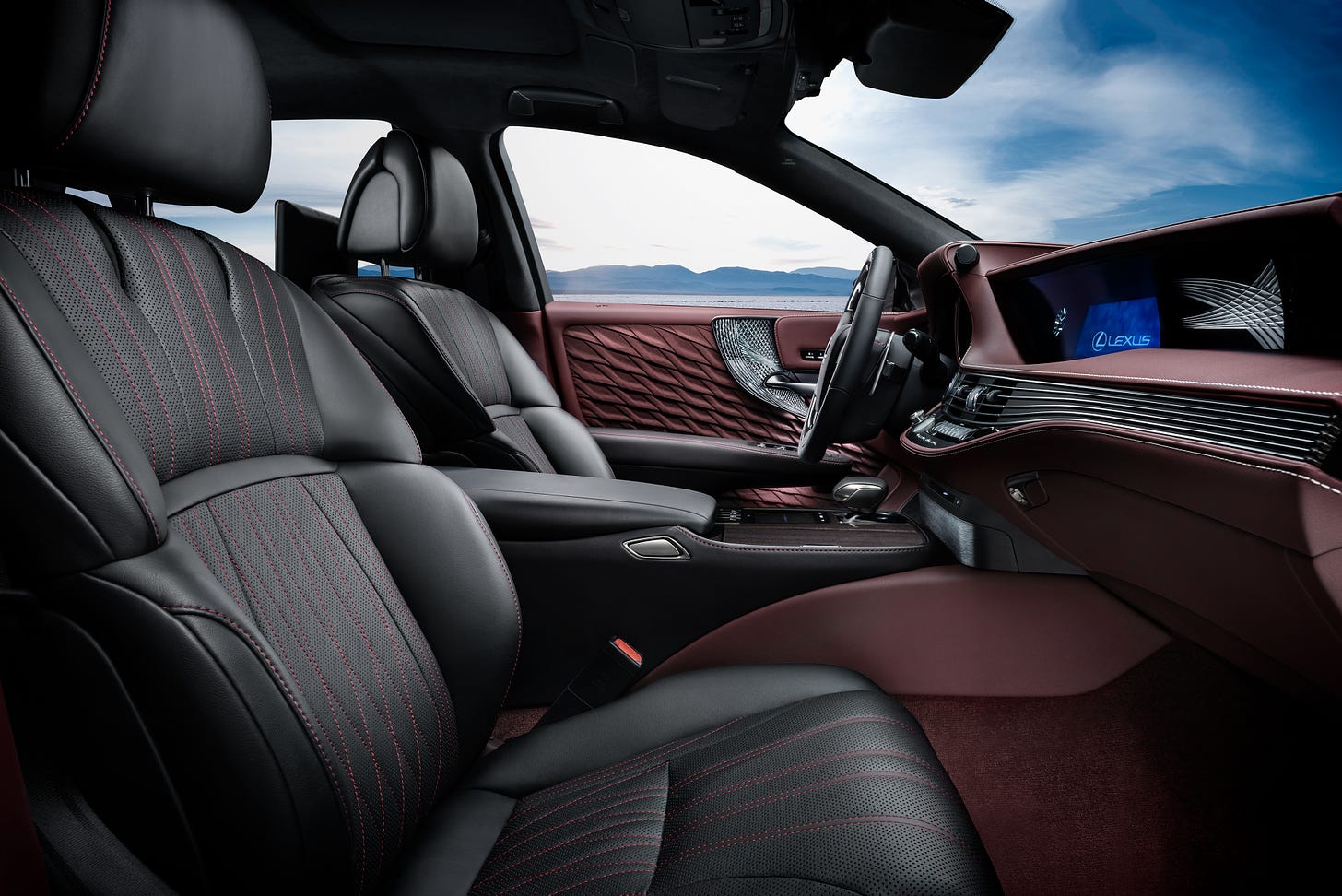BOSTON — As I slipped behind the wheel of the Lexus LS, the company’s flagship executive sedan, I wasn’t quite sure what to expect. OK, I expected endless luxury and comfortable seats and more room than my first apartment, and I got all those. But this is a car that isn’t quite sure what it wants to be.
Gigantic sedans like the Mercedes S-Class and BMW 7-Series are status symbols. They scream “LOOK-AT-HOW-RICH-AND-SUCCESSFUL-I-AM” in a very understated way, like a really nice watch might. I think that’s the best way to advertise success. It should be noted here that I own an Omega Seamaster, like James Bond has, though I don’t have an S-Class so I guess I’m only half-successful.
The Lexus LS is for those who want a slightly more-understated status symbol. It is a bit cheaper than its German competitors, which Lexus specifically mentioned when it launched this car — which is odd for a status symbol that starts north of $75,000, and moreso when my test unit weighs in at an eye-popping $107,355.
But there’s not as much bling and it’s not going to be mentioned in any rap videos and, though it’s very pretty, it doesn’t draw attention either. There’s something about it that I can’t quite put my finger on.
Lexus is very proud of its engines. It designs and builds them in-house, and there’s a lot of fancy technology that goes into making the 3.5-liter V6 natural aspirated engine in the LS500h I had — and then they add on a pair of electric motor/generators and a lithium-ion battery. Between all the motors and engines it produces 354 horsepower and, Lexus says, is enough to move the LS 500h from 0-60 mph in 5.1 seconds. That’s quick by any standard for a car this enormous. If you want to be green, the EPA says it gets 23/31/26 mpg city/hwy/combined. We’ve seen better, but 30 miles per gallon for a highway cruiser isn’t too shabby.
The inside, Lexus says, embraces the omotenashi principle of Japanese hospitality. It basically means to wholeheartedly look after your guests, centering around care rather than expectation — according to the Japanese National Tourism Board. As part of the $12,250 Luxury Package — a friend of mine recently bought a brand-new Ford Fiesta for about that much money — you get 28-way power driver and passenger seats, among many other things. I don’t know if I was able to test all of the 28-ways you can adjust the seat, but the seats are very good. The massage function is even better. It’s not quite a spa day, but it made a multi-hour cruise that much more enjoyable.
The quilted leather is nice, as is the giant center screen and the clock, which is a Lexus hallmark. The 23-speaker, $1,940 Mark Levinson sound system is excellent. The touchpad that you use to control it is not. It’s the same unit that we’ve seen in most Lexus models for the past few years and it’s terrible. I won’t belabor the point but some new Lexus models are getting touch screens and it can’t happen soon enough.
As you would expect, there is a whole host of safety features here, though bizarrely Lexus has hidden some of them in a $3,000 “Advanced” safety package. Why it isn’t just standard, with the base price of the car increased by three grand, is beyond me. Lexus says this is their flagship and most advanced vehicle. So... why isn’t it?
It’s a very nice car. But I reviewed the Lexus LS two years ago when it came out and said that I would be hard-pressed to come up with a reason to buy it over the competition from Mercedes and BMW and Audi that didn’t include mention of the Lexus’ lower price. I still can’t. And it’s confusing, because why would you try to be price competitive on a car pushing past $100,000?
Just build the absolute best car you can build and put it on sale for whatever it costs. I know this isn’t the absolute best car Lexus can build, but I really want to take it for a spin, if they ever make it.






